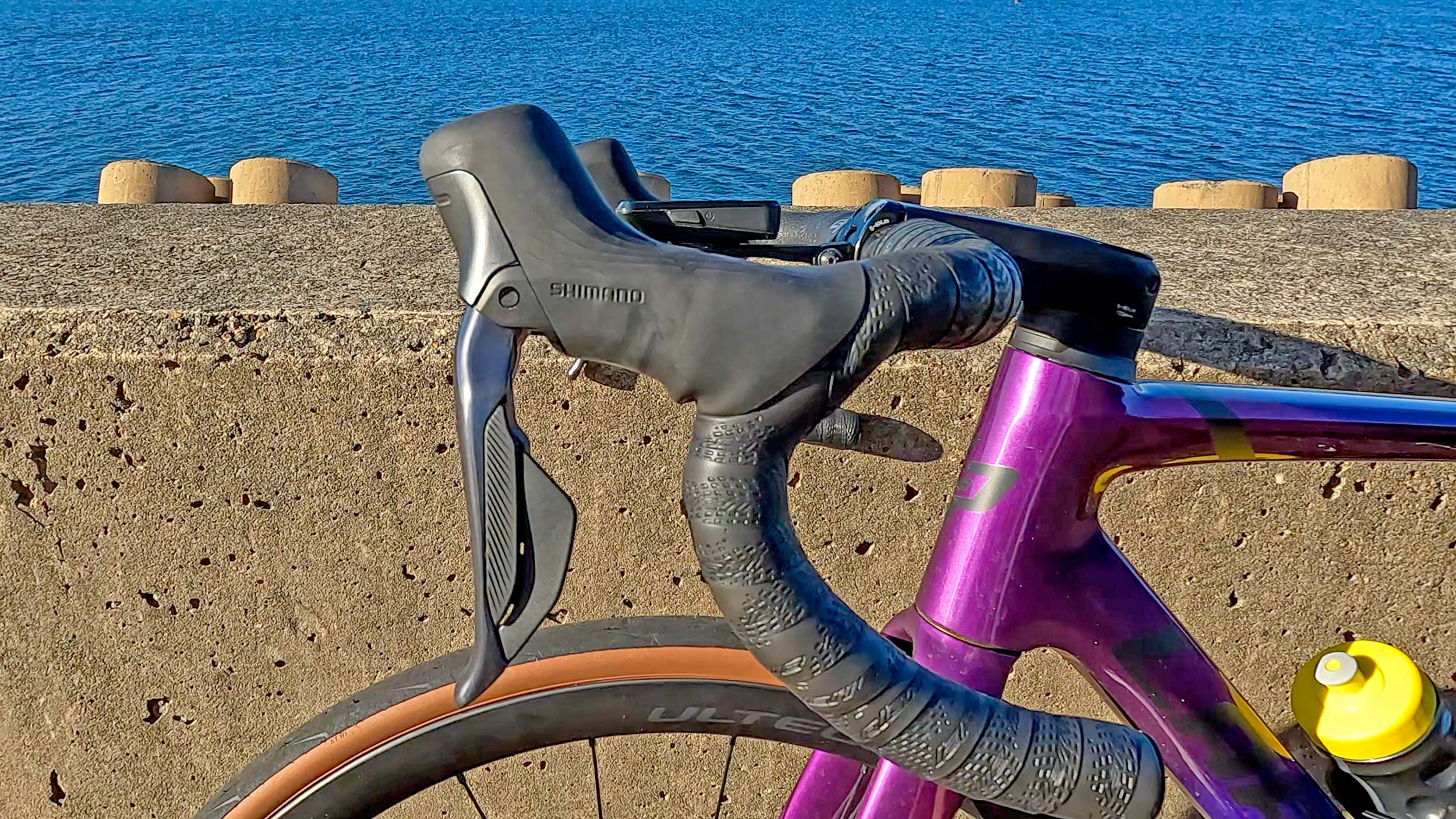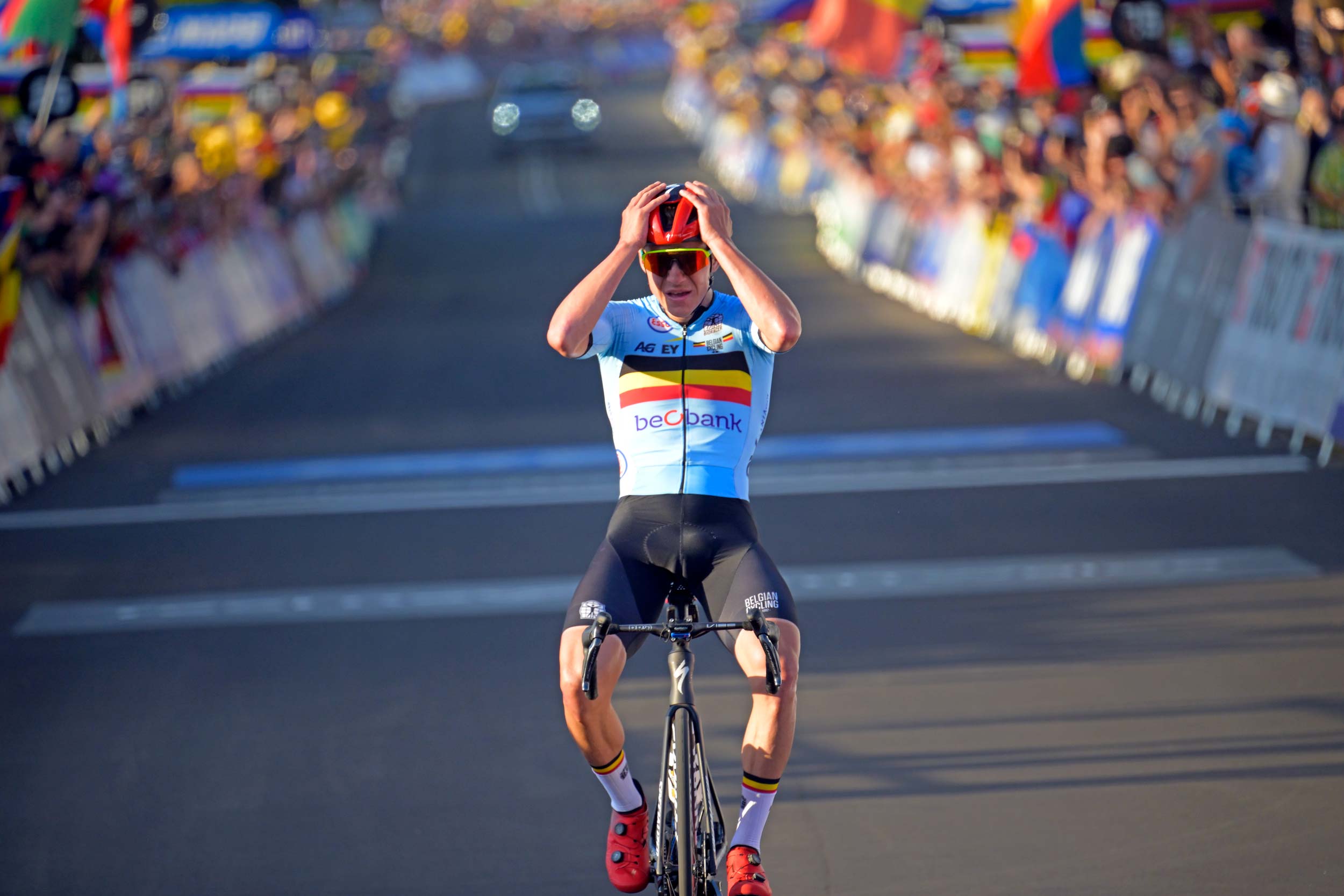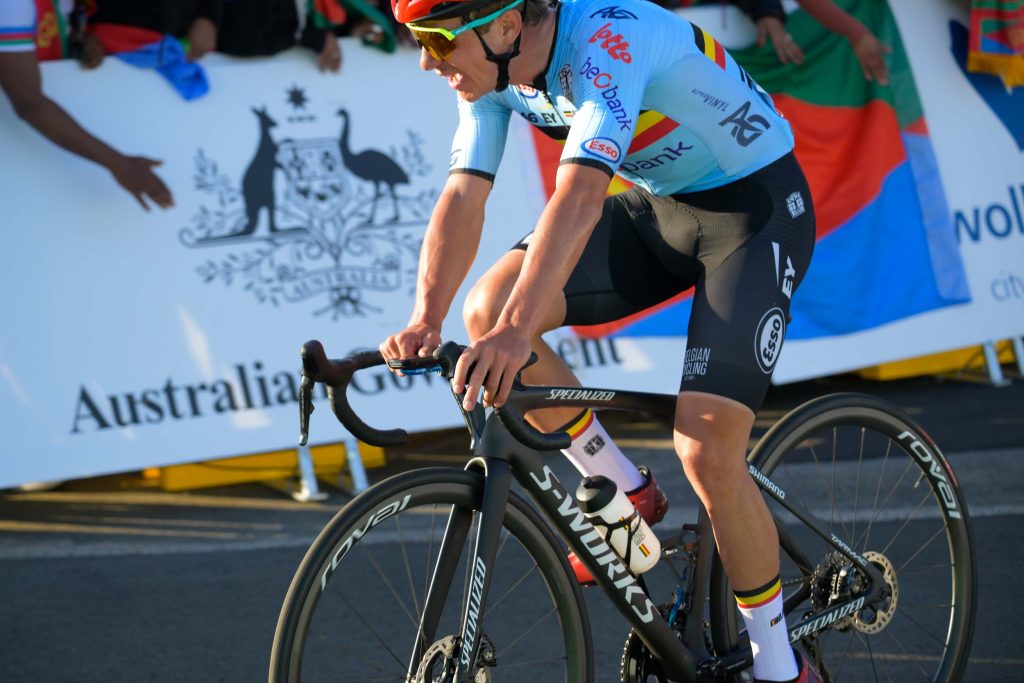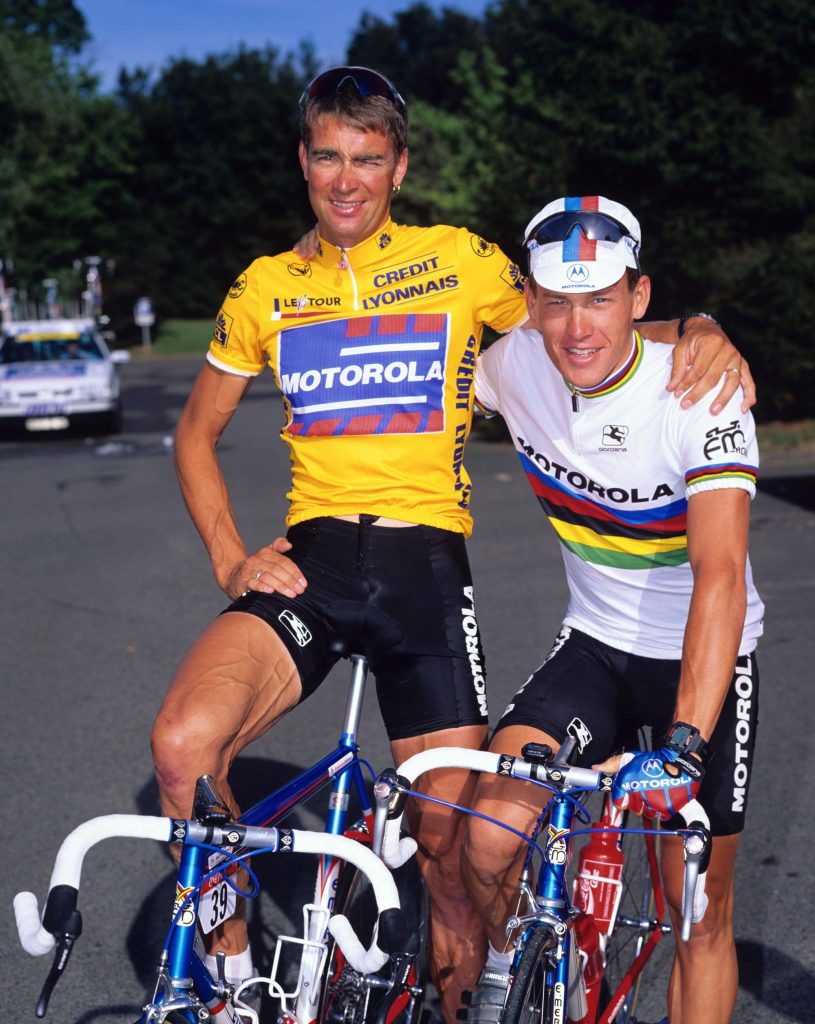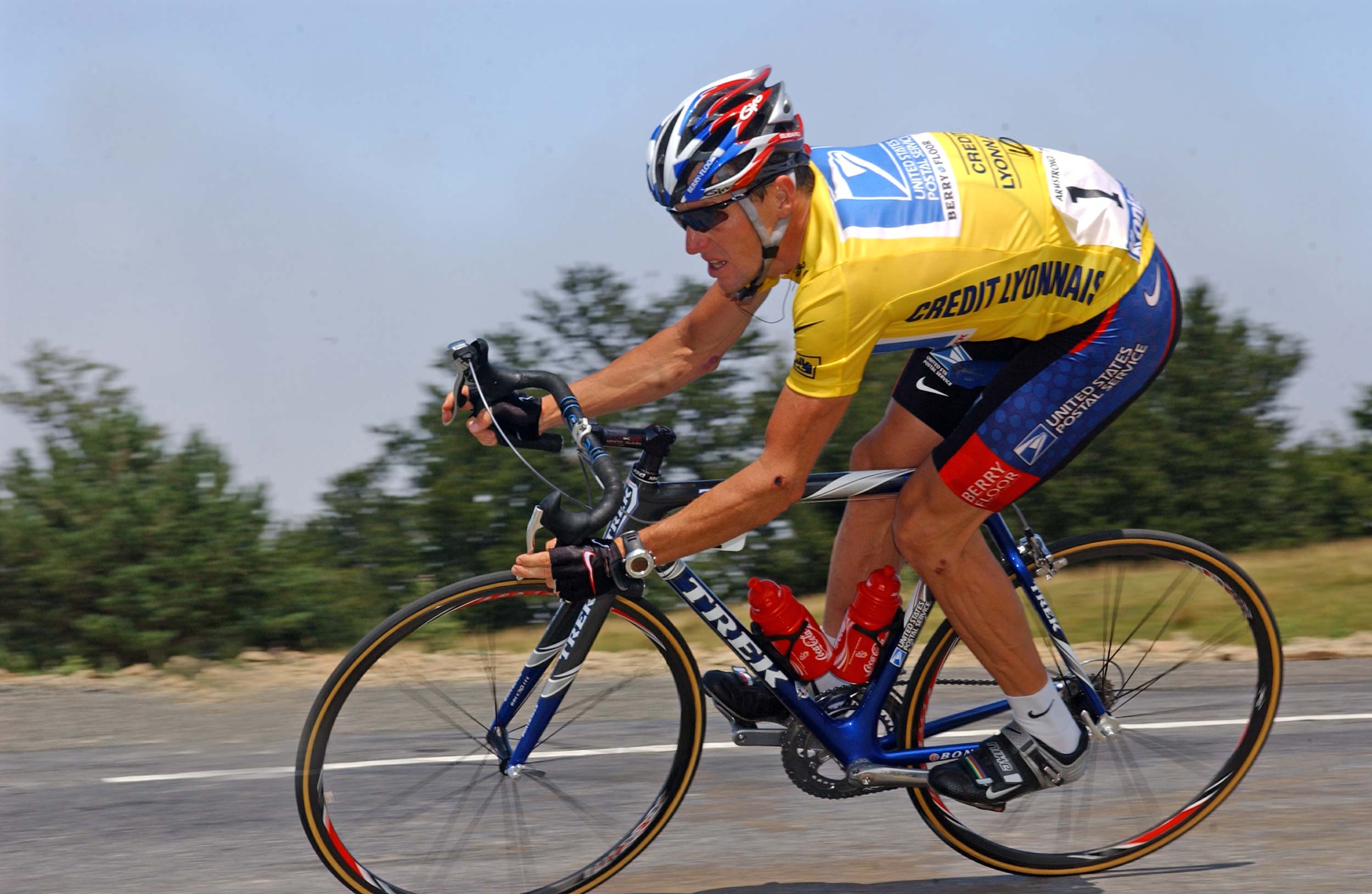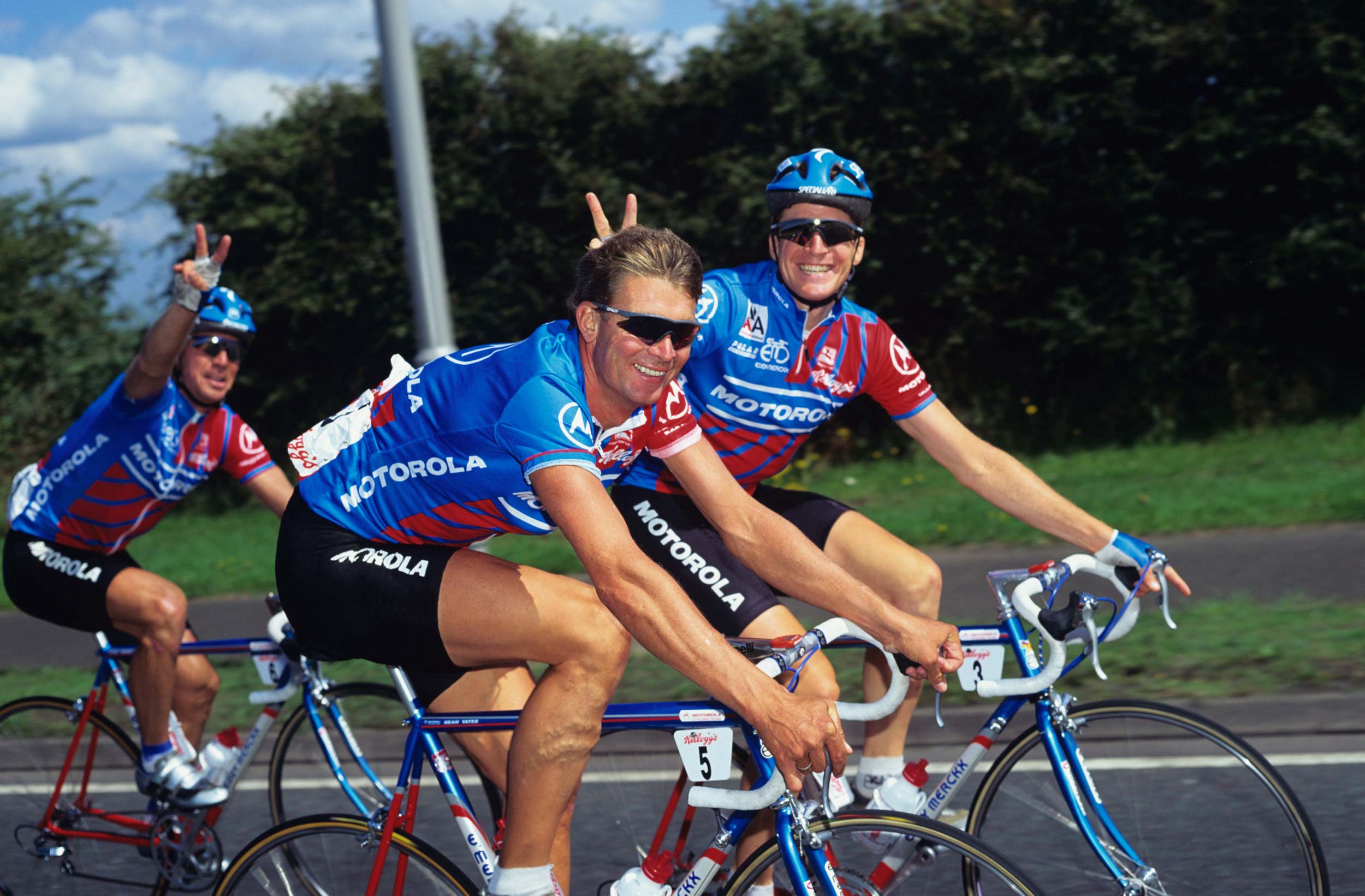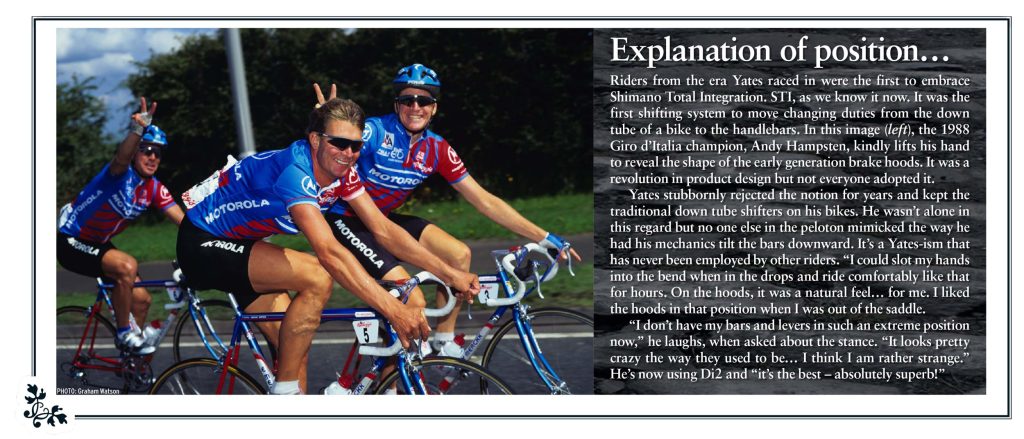Inwards, upwards, downwards… there have been distinct trends for the position of brake/gear levers and hoods on road bikes over the years. What is your preference?
– A blog and videos by Rob Arnold
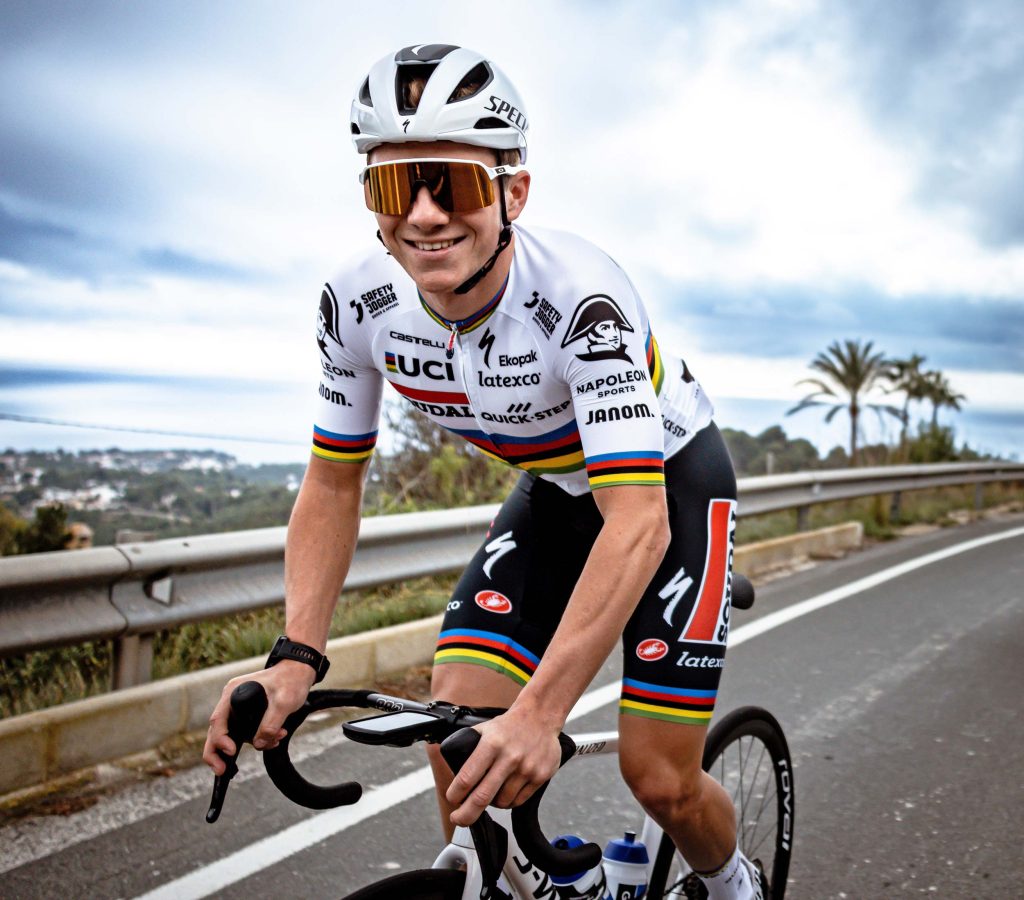
Remco Evenepoel in the new world champion’s outfit that he will debut in 2023. (Photo: Wout Beel, via Quickstep-Alpha Vinyl)
The latest trend for the position of the levers and hoods on road bikes is an inward rotation. It’s a style that has grown in popularity, with the reigning world champion Remco Evenepoel being one of the true trendsetters from the new generation of pro cyclists.
The Belgian has used his inward-tilted hoods to great effect, and it seems to have come from his ability to get into a good aerodynamic position for his signature long-range attacks.
Evenepoel is another example of a pro cyclist making his own adjustments to the position of his hoods although it may not be exactly how Shimano has designed the product to be used. Still, this inward trend has taken off in recent years and the gravel influence is obvious.
– Watch the #StoryOfMyRide video – inc. discussion about levers and hoods… (link below)
If the hoods of Shimano’s Dura-Ace, Ultegra and 105 have been installed the way the company has intended them to be, the lever would essentially run in-line with the downward portion of the handlebar. But the Evenepoel approach is to twist it rather dramatically so that the top of the hoods is a few centimetres inside the handlebars.
It provides a general narrowing of the rider’s stance and is a progression of the trend for smaller handlebars that the UCI is now attempting to police.
New regulations for minimum handlebar widths have been introduced during the off-season, with regulation 1.3.012 in the UCI rules stating:
“The maximum width of 500mm for the bicycle directly relates the maximum authorised overall width (outside – outside) of handlebars. The minimum overall width (outside – outside) of traditional handlebars (road events) and base bars (road and track events) is limited to 350mm.”
Click here for a full summary of UC rule clarifications from the off-season.
Shimano, responding to market demand
The growing gravel riding movement has been tweaking traditional positions for years and levers / hoods were one of the first things to be experimented with.
Handlebars for gravel bikes come in all shapes and sizes but often the drop flares outwards so that the base of the handlebar is easier to access, and often considerably wider than where the hoods are located.
When Trek launched the new Madone in 2022, the proprietary handlebars that come with the bike boast the outward flare that has become popular in gravel riding. Aerodynamic benefits are referenced as one of the catalysts for this approach, but also comfort. Surely, however, it’s also a response to market demand, and the current trend in favoured cycling positions.
Shimano’s gravel specific GRX groupset has levers that have essentially been designed so that they mimic the inward tilt position that riders like Evenepoel and so many others are using in 2022.
Having recently ridden with both the GRX and latest Ultegra groupsets, it seems that the company is responding to rider preference for the inward tilt even if it isn’t actively encouraged for the road groupsets.
Twisting despite correct torque
I’ve recently realised that even when the levers are tightened at the recommend torque settings, there is a tendency for the hoods to become angled inward slightly because of forces that are applied when riding.
It became more apparent this week when I found myself having to do some manoeuvres while in traffic; a curb jump here, or a bunny hop there… and during the course of one ride, the levers on the Lapierre review bike started tilting inwards.
It’s not a dramatic change to the position of the hoods but it’s noticeable when riding – and I quite like it.
I’ve not yet gone to the extremes we see Evenepoel et al riding with, but I can understand why the current generation has begun tweaking what had been a rather traditional set-up for road bikes.
It puts me in a good stance, and my hands match the Ultegra hoods well with a variety of grips: with the hood nestled into the hook of my hand between thumb and index finger, or with the top of the hood position in the palm of my hand, or subtle variations to a range of other themes… and it all feels ergonomically correct.
The mid-ride alterations just happened, it wasn’t by design and yet I’m not sure if I’m going to push the hoods back into what might once have been deemed the ‘traditional’ position.
Trends from other generations
The propensity for pro and recreational riders alike to experiment with the position of the levers and hoods on their bikes isn’t new. The inward tilt is the latest trend, but before that there have been big-name riders bucking the desires of groupset manufacturers and creating their own set-up.
Sometimes the unorthodox approach is adopted by others, or it might just be the preference of one rider in particular. For examples of this, we don’t need to look any further than two former team-mates during a time of significant change for pro cycling: Lance Armstrong and Sean Yates (above).
The Texan and the Englishman certainly had hood styles of their own – one position became adopted by many, while the other position was almost unique to the rider who started using it by accident.
Lance liked to tilt his hoods up higher on the handlebars than how Shimano had designed the STI levers to be. And it was a trend many others followed – including a large majority of his team-mates during the US Postal / Discovery Channel days. The picture below illustrates this point well.
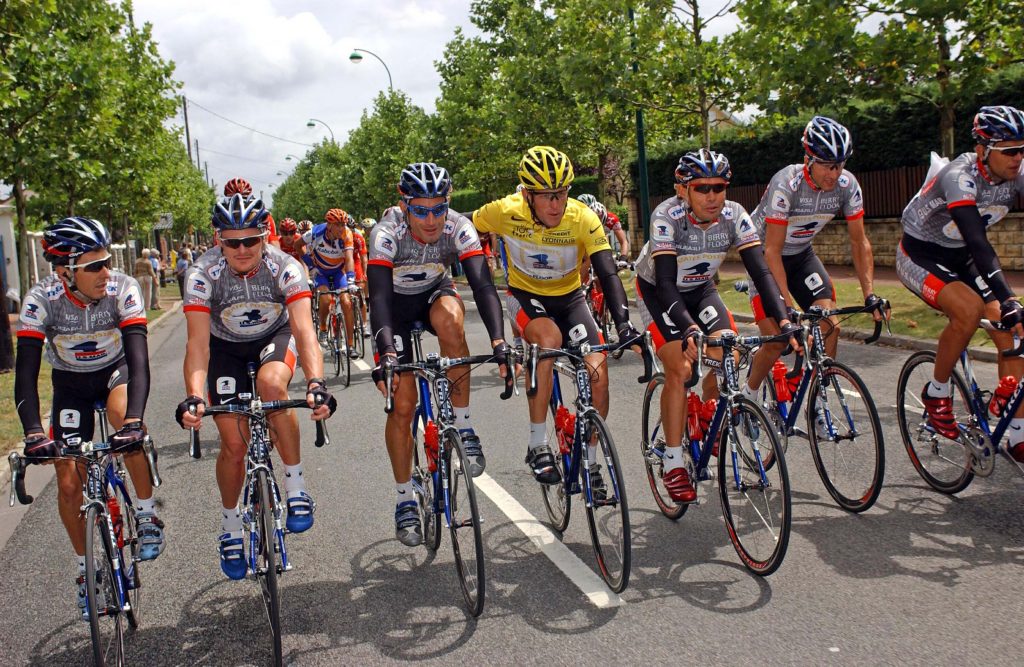
If ‘The Boss’ does it… so does everyone else. US Postal in 2003, when all riders at the TDF had their hoods tilted upwards even though it wasn’t in keeping with the recommendations by Shimano. (Photo: Graham Watson)
Meanwhile, Sean Yates had long shunned the move to STI (Shimano Total Integration), preferring instead to continue using down tube shifters long after they were largely phased out by groupset manufacturers. He also liked to have his handlebars tilted downwards in a rather extreme manner.
As I explain in the video that got me thinking about hood position, I once asked Yates about his odd-looking position, and he told me it happened by accident. Once in a race early in his career, his handlebars slipped after hitting a bump in the road. He finished the race, did well… and never looked back.
The Yates style is rarely copied and although he would indeed later employ the same downward tilt with STI-equipped bikes, you won’t find many other examples of riders taking this approach.
When electronic shifting and the Di2 were launched by Shimano in 2008, I went to the factory in Japan and was able to ask designers of the Dura-Ace groupset what they thought of the trend of riders adopting the ‘Pistol Style’ stance that Armstrong made popular.
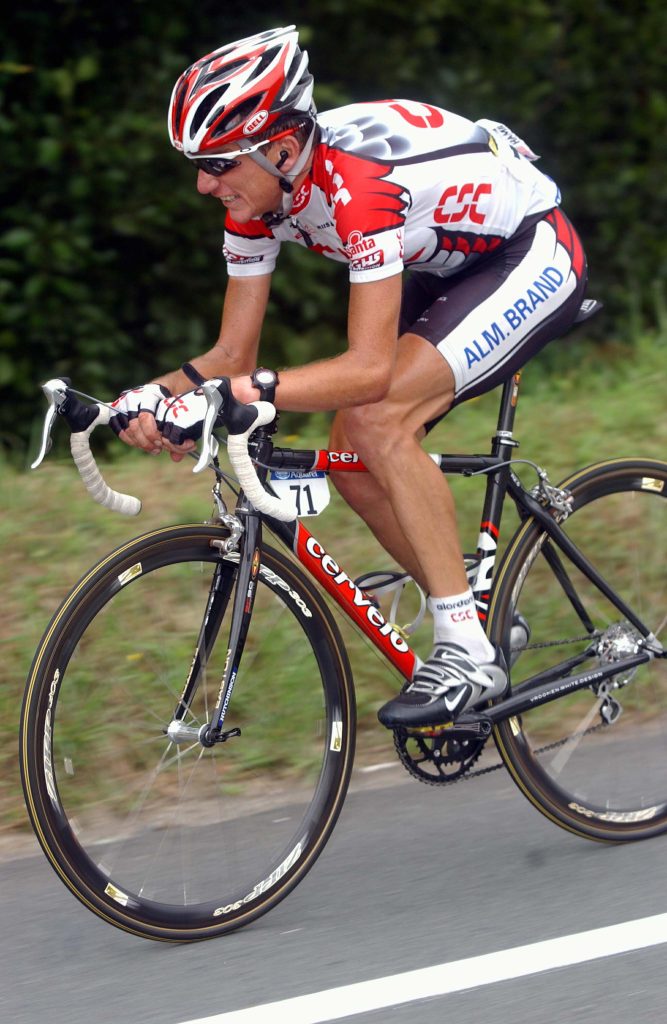
Even after he stopped being a team-mate of Armstrong, Tyler Hamilton continued racing with his hoods tilted upward. (Photo: Graham Watson)
It prompted a few giggles from the designers, followed by a roll of the eyes. They were well aware of what I was talking about, and they replied that Lance’s approach was entirely wrong, that his way of riding was not at all in keeping with the intended ergonomic benefits of the Dura-Ace lever/hood design.
“It would be great,” came the conclusion to the answer, “if riders would stop adopting the wrong set-up, the one used by Lance.”
The inward tilt that has come about by proxy on my review bike doesn’t feel like it’s counterintuitive, or that it’s messing with the intended ergonomics of the groupset. It could even be that, now the UCI is meddling with minimum handlebar widths, we’ll see manufacturers respond with an exaggerated inward position of the hoods for road bikes.
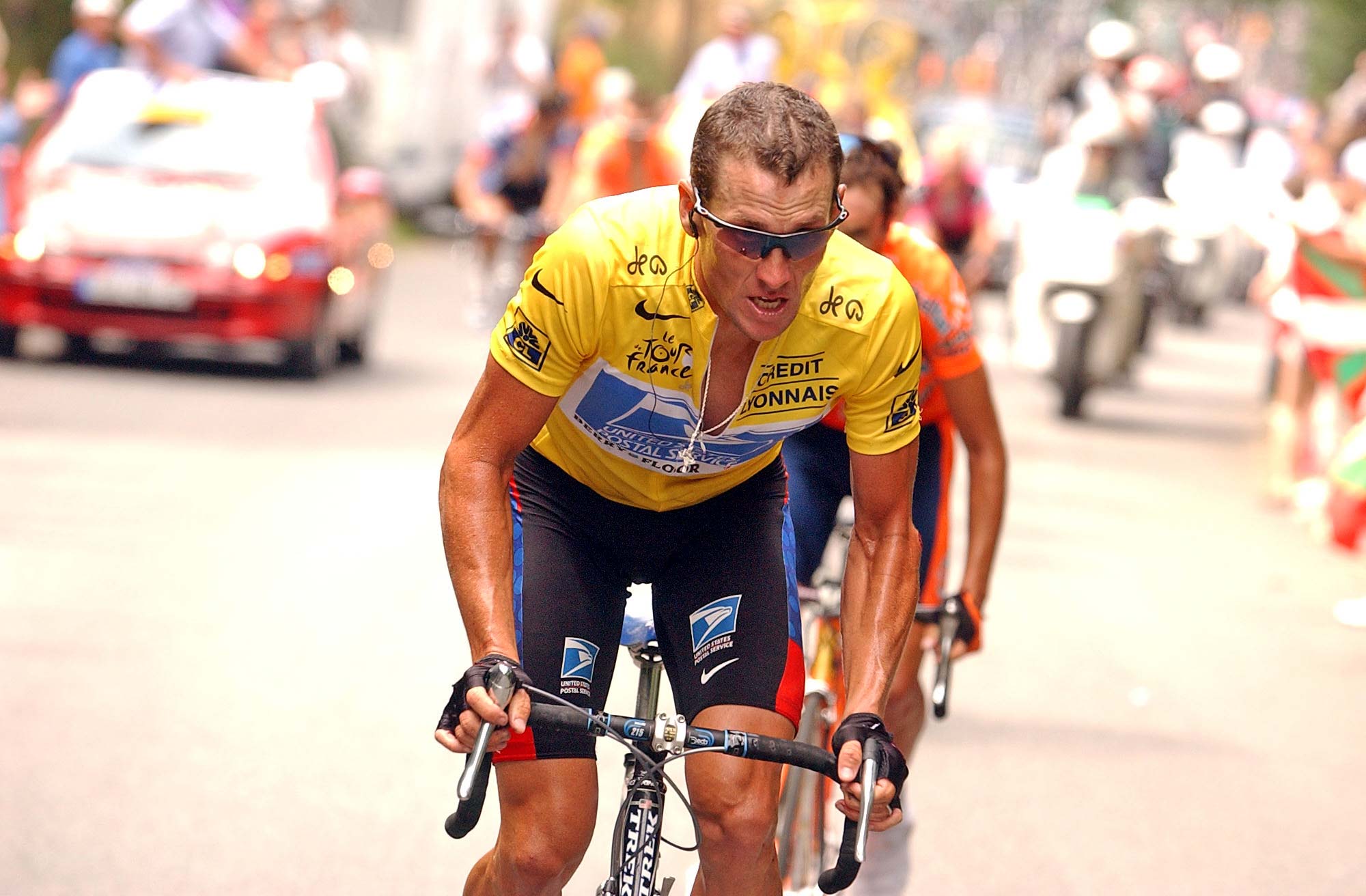
Armstrong had other variations to the norm, including mixing STI and traditional levers (as illustrated here in this shot from the TDF of 2003). This was done to save weight on his climbing bike which also had a down tube shifter to activate the front derailleur. (Photo: Graham Watson)
Road cycling may have a long history and many well-established traditions, but the design of bikes and components continues in 2022. What we’re riding now is a stark contrast to the bikes of only 10 years ago.
The position riders are adopting is also evolving. What comes next is anyone’s guess but it won’t be long now before we see Remco back in action, racing in his rainbow jersey and demonstrating how the inward tilt of his hoods is helping him (and many others) eke the most out of the bike.
– By Rob Arnold
More from RIDE Media on Instagram, Twitter, Facebook and YouTube.


